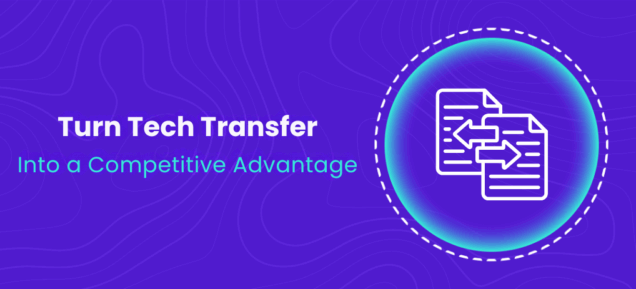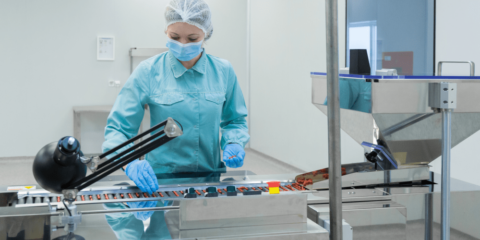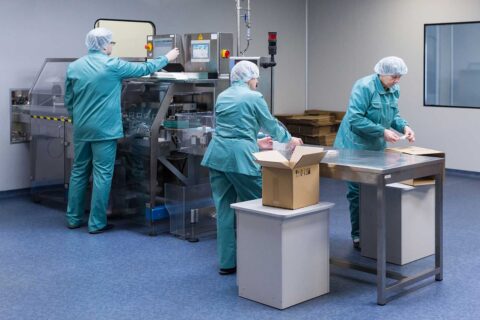Summary: Technology transfer in pharma is often slowed down by fragmented data, incomplete knowledge sharing, and outdated document-centric handoffs. This creates inefficiencies, costly delays, and high rejection rates. By shifting to a data-driven, collaborative approach, sponsors and CDMOs gain a unified view of processes, close the “know-how” gap, and strengthen process robustness. Modern intelligence platforms with AI-powered tools transform tech transfer from a risky bottleneck into a competitive advantage—accelerating time to market and improving supply chain resilience.
Tech transfer is far more than a handover of documents or equipment; it is the complex migration of institutional knowledge, process expertise, and tacit know-how required to replicate and scale manufacturing with precision. Despite being fundamental to ensuring continuity and scale, it remains one of the most challenging phases in pharma manufacturing. Data silos, fragmented documentation, and variability across sites often turn this critical step into a bottleneck that strains timelines and budgets.
For many organizations, this handoff has become a significant source of risk and inefficiency. The traditional, linear ‘push’ model, where R&D simply hands over a static package of documents to manufacturing, is a system built for a time when processes and requirements were far less complex. This one-dimensional approach frequently leads to costly project delays, extensive deviation investigations, and millions of dollars in lost revenue due to late product launches and scrapped batches. In many cases, the task becomes so burdensome that companies need to employ project manager dedicated only to tech transfer.
What is the “Know-How” Gap in Technology Transfer?
One of the most pervasive problems in tech transfer is the failure to effectively transfer “tacit knowledge,” or the undocumented expertise held by the development teams. While documentation packages are created, they often lack the critical context, historical insights, and minor but essential details that only the original team knows. This forces the receiving team to “reverse-engineer” the process, which is both time-consuming and prone to error.
This incomplete knowledge transfer, combined with data fragmentation across different systems and formats, negatively impacts Right-first time. Data might be scattered across various systems—from R&D to manufacturing execution systems—making it difficult to establish a “single source of truth” for all process knowledge. This challenge is particularly acute for legacy products that rely on a history of paper-based records. When a receiving site, such as a Contract Development and Manufacturing Organization (CDMO), tries to make sense of this fragmented information, they face the immediate frustration of troubleshooting a process that isn’t working as expected, leading to stress and high batch rejection rates.
The solution lies in moving beyond static documents and embracing a unified, data-driven approach. This is where modern manufacturing intelligence platforms come in. By creating a single, integrated data environment, they can transform fragmented data into a complete and auditable digital record. For example, the Mareana Manufacturing Intelligence Platform utilizes its Batch Genealogy module to create an AI-powered, end-to-end visual map of all production data. This provides a new manufacturing site with an instant digital twin of the process, ensuring a deep understanding of the product’s history and behavior, and helping to close the “know-how” gap.
How Does a Data-Driven Approach Improve Process Robustness?
Another major challenge in technology transfer is ensuring process robustness and predictability. Adopting Quality by Design (QbD) principles is key to this, as it involves defining the “design space”—the relationship between raw materials, process parameters, and quality attributes. Without this deep understanding, a new site may struggle to replicate a consistent process and maintain it in a “state of control”.
Historically, this has been managed through reactive quality control, waiting for deviations to occur and then investigating them. This approach is not only inefficient but also costly. In fact, a single failed commercial batch of a high-value biologic can result in a loss of tens of millions of dollars.
For a more comprehensive look at how these factors interconnect and to explore advanced strategies for de-risking technology transfer, read our detailed whitepaper, De-Risk Tech Transfer and Accelerate Time to Market
A data-driven approach transforms reactive quality control into a proactive process. Solutions like Mareana’s Smart CPV (Continuous Process Verification) module leverage AI-driven predictive analytics and real-time data integration to anticipate quality deviations before they occur. This gives the receiving team a tool that continuously monitors the process, ensuring it remains within the validated design space. This not only reduces the risk of quality failures but also provides the confidence that the transferred process is consistently robust and predictable.
By moving from a document-centric handoff to a collaborative, data-driven journey, companies can transform technology transfer from a bottleneck into a significant competitive advantage. This strategic shift allows organizations to accelerate their drug development pipeline, reduce time to market for new therapies, and build a more flexible and resilient supply chain.
Conclusion
The problems with traditional technology transfer are clear, but so is the path forward. By embracing a modern, data-driven approach, life sciences organizations can overcome fragmentation, mitigate risk, and accelerate their product pipelines. The Mareana Manufacturing Intelligence Platform provides the tools and capabilities necessary to make this transformation a reality, empowering teams with a single source of truth and enabling them to focus on what matters most: bringing life-saving therapies to patients, faster and more reliably.
Ready to transform your tech transfer process and unlock your pipeline’s full potential? Contact us today for a personalized demo.
Frequently Asked Questions (FAQs)
- What is technology transfer in pharmaceutical manufacturing? Technology transfer is the process of moving institutional knowledge, processes, and expertise from development (R&D) to commercial manufacturing. It goes beyond handing over documents—it involves transferring tacit know-how, data, and process understanding to ensure consistent, scalable, and compliant production.
- Why is technology transfer considered a major challenge in pharma? Tech transfer is challenging because of fragmented documentation, data silos, and variability between manufacturing sites. Traditional document-based approaches often fail to capture tacit knowledge, leading to delays, costly deviations, and inefficiencies that can delay product launches and increase batch rejection rates.
- What is the “know-how gap” in technology transfer? The “know-how gap” refers to the missing tacit knowledge—undocumented expertise and context—that R&D teams often don’t capture in official documentation. Without this critical information, manufacturing teams may need to “reverse-engineer” processes, increasing risks of errors and inefficiencies.
- How does a data-driven approach improve technology transfer? A data-driven approach integrates all process knowledge into a single digital platform, creating a unified source of truth. This not only ensures accuracy but also enables collaborative oversight between sponsors and Contract Development and Manufacturing Organizations (CDMOs). Both parties can monitor processes in real time, share insights seamlessly, and resolve issues faster. By leveraging AI-powered tools like batch genealogy and predictive analytics, organizations can proactively identify risks, ensure process robustness, and achieve right-first-time manufacturing, making technology transfer more successful.
- What role does Quality by Design (QbD) play in tech transfer? Quality by Design (QbD) helps define the “design space,” which links raw materials, process parameters, and product quality attributes. Incorporating QbD principles during transfer ensures processes are better understood, more robust, and consistently controlled at new manufacturing sites.
- How do modern intelligence platforms support tech transfer? Platforms like Mareana’s Manufacturing Intelligence solution consolidate fragmented data, create digital process twins, and apply predictive analytics. This allows teams to monitor processes in real time, anticipate deviations, and maintain process control—ultimately reducing costs and accelerating time to market.
- What risks can be reduced by adopting a data-driven transfer model? Key risks minimized by a data-driven model include:
- Delayed product launches
- Failed or scrapped batches
- Costly deviation investigations
- Loss of millions in revenue from process inefficiencies
- High stress and inefficiency at receiving manufacturing sites
- How does proactive quality monitoring differ from traditional methods? Traditional methods rely on reactive quality control—waiting for deviations and investigating afterward. Proactive monitoring uses AI-driven continuous process verification (CPV) to predict deviations before they happen, keeping processes within the validated design space and improving efficiency.
- Why is technology transfer critical for accelerating time to market? A streamlined and efficient tech transfer reduces delays, ensures right-first-time execution, and supports scalability. By minimizing risks and inefficiencies, companies can bring life-saving therapies to patients faster while gaining a competitive advantage in the market.
- How can companies get started with a modern, data-driven tech transfer approach? Organizations can begin by adopting digital intelligence platforms that unify data and provide predictive insights. Partnering with providers like Mareana allows pharma companies to establish a single source of truth, close knowledge gaps, and transform tech transfer into a strategic advantage.




 Learn more
Learn more



